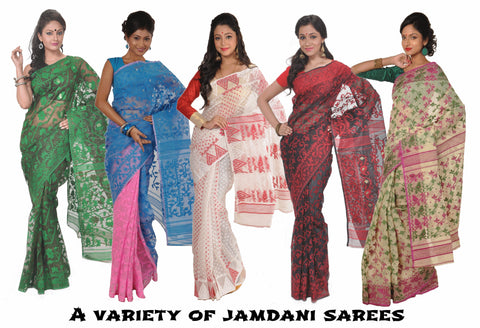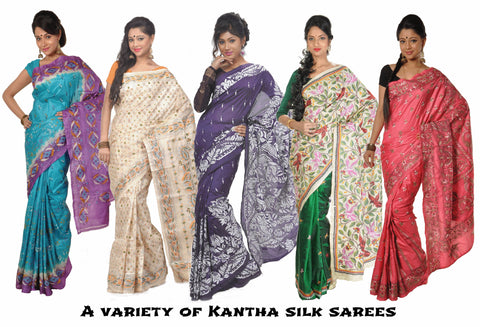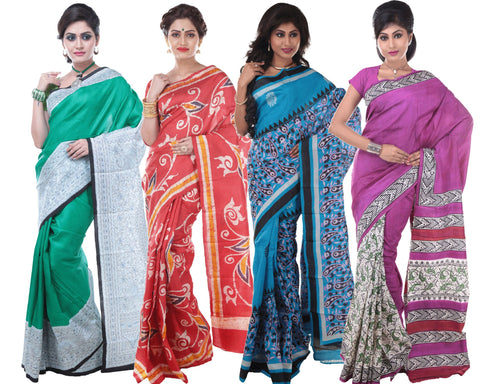How to identify your Bengal handloom sarees?
Unless you grew up in a traditional Bengali family, you may often find it confusing to distinguish a garad saree from a korial or a jamdani from a muslin. They often look similar from a distance and only knowing the characteristics of each saree will help you identify them correctly. Here’s a quick overview on the different types of handloom sarees from West Bengal.


3. Muslin: A muslin saree (also called ‘dhakai muslin’) is an ultra-fine saree in an exotic sheer fabric with a glossy texture. Delicate motifs are woven on the transparent sarees in a manner similar to jamdani sarees. Weaving these sarees is a very skilful and laborious art, making these among the most expensive sarees from the region. Check out our muslin saree collection here.

4. Garad: A garad is a pure silk saree characterized by a plain white or off-white body and a simple coloured border and a striped pallav. The most popular garad sarees have a red border and pallav, but they are also available in other colours. Check out our garad saree collection here.

5. Korial: A korial saree (also called ‘garad-korial’) is a grand version of the simple garad saree. Like the garad, it has a white or off-white silk body and a coloured border and pallav. The texture of the silk is richer in a korial saree, and it is decorated with more ornamental and intricate motifs. Check out our korial saree collection here.

6. Baluchari: A baluchari is one of the most gorgeous silk sarees from Bishnupur, in Bengal. It is characterised by an exotic border and elaborate pallav filled with intricate weavings depicting scenes from ancient epics and religious texts. The weavings are done in colours that stand out in contrast against the silk base of the saree. The most opulent baluchari sarees have weavings done in gold and silver coloured threads. Check out our baluchari saree collection here.

7. Tussar: A tussar silk saree has a natural, pale golden sheen. When undyed, these sarees come in shades of beige, cream, honey or tawny. They are often dyed to take up more vibrant colours. The traditional tussar silk sarees from West Bengal are defined by decorative woven borders and pallav and the motifs used are similar to those in tant and jamdani sarees. Check out our tussar saree collection here.

8. Murshidabad silk: Murshidabad is a district in West Bengal known for weaving silk of very good quality. Fine, light-weight pure silk sarees from this region are very popular as formal and casual wear. They are easy to drape and come in a variety of colourful, printed designs. These sarees are collectively known as ‘Murshidabad silk’ sarees. Check out our Murshidabad silk saree collection here.

9. Kantha: Kantha a style of embroidery that originated in the Bolpur-Santiniketan region of West Bengal, and is widely used to pattern sarees in all kinds of fabrics. The kantha embroidery is characterized by the 'running stitch', which is always done by hand using coloured threads, and can form very elaborate and intricate patterns. The beauty of kantha work is best featured on pure silk and tussar silk sarees. Check out our kantha silk saree collection here.

10. Bishnupuri silk: Bishnupur (or Vishnupur) is a district in West Bengal known for its heritage of weaving rich silks. The most luxurious variety of Bishnupuri silk is used to make the gorgeous baluchari sarees. Another variety of silk that is fine and light-weight is used to make soft sarees with pretty block-printed, acid-printed and batik-painted designs. These sarees are collectively known as ‘Bishnupuri silk’ sarees. Check out our Bishnupuri silk saree collection here.


